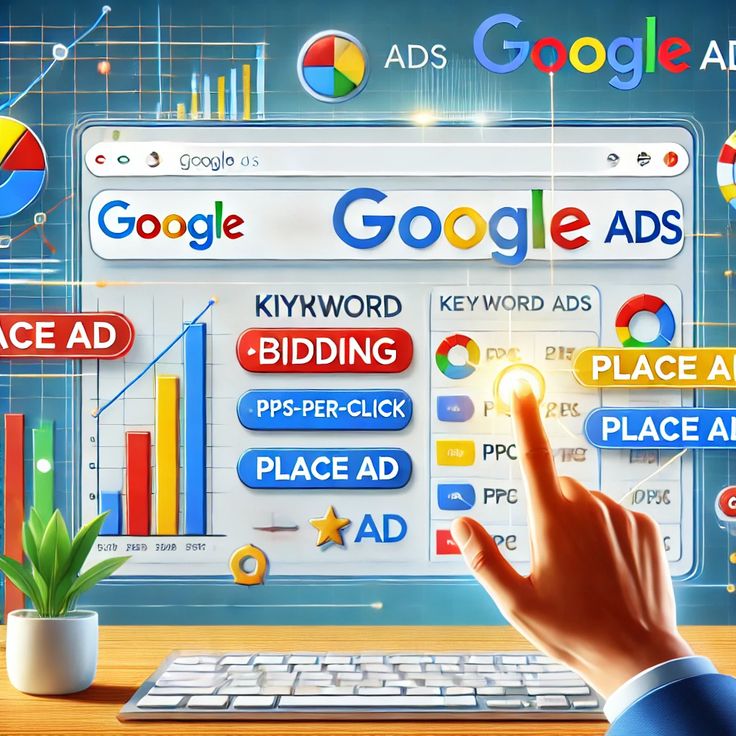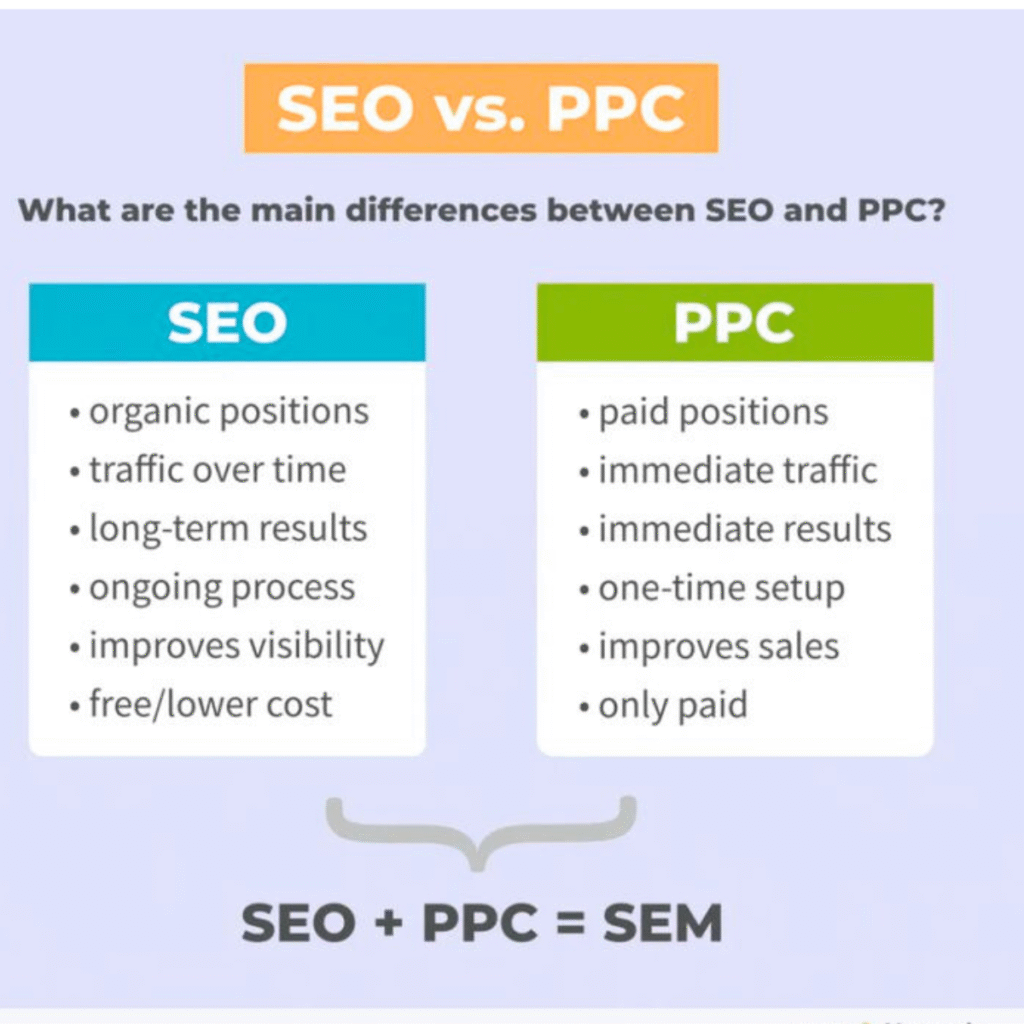Introduction
In the modern digital world, businesses constantly seek effective ways to drive traffic to their websites. One of the most common questions they face is: SEO vs Google Ads: Which Drives More Organic Traffic? Two powerful strategies dominate the scene — SEO (Search Engine Optimization) and Google Ads (Pay-Per-Click). While both have their own strengths, this question remains critical for marketers and business owners alike.
“Which one actually drives more organic traffic?”
At first glance, SEO seems like the obvious winner for organic results, but Google Ads can also play a surprising role in visibility and click-through rates.
What You’ll Learn in This Blog:
- How SEO and Google Ads work
- Comparing their effectiveness in generating organic vs paid traffic
- Long-term value and return on investment (ROI)
- Which strategy suits your business goals best
Let’s dive in and explore which approach truly fuels your organic growth — and why it matters more than ever in 2025.
What is Organic Traffic?
Organic traffic refers to visitors who land on your website through unpaid search results. These users enter a query on search engines like Google, and if your site ranks well, they naturally click through to your page.
Key Characteristics:
- Comes from non-paid search results
- Often driven by effective SEO strategies
- Typically indicates high intent and relevance
What is SEO?

Search Engine Optimization (SEO) is optimizing your website for higher ranking in natural (free) search results. It includes strategies like keyword research, on-page SEO, technical optimization, content creation, and link building. When evaluating SEO vs Google Ads: Which Drives More Organic Traffic?, SEO clearly focuses on long-term, organic visibility. An optimized site improves user experience, loads faster, and is mobile-friendly—factors that influence rankings and drive sustainable traffic without relying heavily on paid ads.
Key Components of SEO:
- On-page SEO (title tags, meta descriptions, keyword optimization)
- Off-page SEO (backlinks, social signals)
- Technical SEO (site speed, mobile-friendliness, crawlability)
- Content marketing (blogs, videos, infographics)
Pros of SEO:
- Long-term traffic growth
- Cost-effective over time
- Builds brand authority
Cons of SEO:
- Takes time to see results (3–6 months minimum)
- Requires continuous updates and monitoring
- Algorithm changes can impact rankings
What is Google Ads?

Google Ads is a paid advertising platform that lets companies place ads on YouTube, in search results, and throughout the Google Display Network. It operates on a pay-per-click (PPC) basis, meaning that you only have to pay when an ad is clicked. When exploring SEO vs Google Ads: Which Drives More Organic Traffic?, it’s important to note that Google Ads focuses on immediate, paid visibility. With options for precise targeting—like keywords, location, device, and audience interests—Google Ads effectively increases brand awareness, generates qualified leads, and drives immediate visibility.
Key Features:
- PPC model – you pay when someone clicks your ad
- Immediate visibility at the top of search results
- Highly targeted based on keywords, location, demographics
Pros of Google Ads:
- Instant traffic results
- Precise audience targeting
- Easy to track ROI
Cons of Google Ads:
- Ongoing cost
- Traffic stops when ads are paused
- May not build long-term authority
SEO vs Google Ads: Which Drives More Organic Traffic?
When we ask, “Which drives more organic traffic – SEO or Google Ads?”, the answer is straightforward: Only SEO drives true organic traffic.
- Organic traffic by definition excludes paid clicks
- SEO helps your site rank in natural listings
- Users tend to trust organic results more than ads
- Higher click-through rates (CTR) on organic links for long-tail keywords
SEO vs Google Ads: Keyword Strategy Comparison
SEO Keyword Strategy:
- Focuses on long-term ranking for relevant keywords
- Includes informational, navigational, and transactional keywords
- Emphasizes content relevance and quality
Google Ads Keyword Strategy:
- Focuses on bidding for high-intent, commercial keywords
- Includes broad match, phrase match, and exact match targeting
- Quick A/B testing possible for conversion optimization
Combining SEO and Google Ads: A Winning Strategy

Although SEO drives organic traffic, combining it with Google Ads can amplify results.
Benefits of Using Both:
- Faster visibility with Google Ads while building SEO
- Keyword data from Ads informs SEO content
- Increases total SERP real estate
- Remarketing opportunities for organic visitors
Ideal Use Cases:
- New websites using Google Ads while SEO ramps up
- Product launches that require immediate visibility
- Competitive keywords where Ads can complement SEO
Metrics: How to Measure Organic Traffic from SEO
Use tools like:
- Google Search Console – organic keyword impressions and clicks
- Google Analytics – source/medium reports (e.g., google/organic)
- SEMrush / Ahrefs – keyword rankings and traffic estimates
Key Organic Metrics:
- Organic sessions
- Bounce rate
- Pages per session
- Conversion rate
SEO vs Google Ads Cost Comparison
| Metric | SEO | Google Ads |
|---|---|---|
| Initial Cost | Low | High (Pay Per Click) |
| Long-Term Cost | Lower | Continual ad spend required |
| ROI Potential | High over time | Immediate but variable |
Conclusion: SEO Powers Organic Traffic
If your goal is to drive organic traffic, SEO is the clear winner. It not only builds your presence over time but also creates sustainable visibility and authority. When evaluating SEO vs Google Ads: Which Drives More Organic Traffic?, SEO clearly stands out as the long-term solution. It builds lasting visibility, trust, and organic reach without ongoing costs. However, Google Ads supports short-term goals, offering immediate visibility, especially in competitive markets. For the best results, combine both strategies—use SEO for sustainable growth and Google Ads for instant traffic boosts. Together, they create a powerful digital marketing mix.
Summary:
- Use SEO for long-term organic growth
- Use Google Ads for immediate exposure and short-term goals
- Combine both for a powerful digital strategy